
 |
The impact of values and learning approaches on student achievement: Gender and academic discipline influences
Liudmila Tarabashkina
The University of Adelaide
Petra Lietz
Australian Council for Educational Research
This paper presents results from a longitudinal study of sojourner students which was conducted at an international university in Germany from 2004 to 2007. The study followed a cohort of undergraduate students from the first week of their studies to their graduation. Participants completed three questionnaires: the Portrait Value Questionnaire (Schwartz et al., 2001), the Study Process Questionnaire (Biggs, 1987b), and the Student Background Questionnaire (Matthews, Lietz, & Darmawan, 2007). Structural Equation Modelling was used to examine how personal values influenced students' learning approaches and how these, in turn, were related to students' achievement. It was also examined how robust these relationships were once gender and discipline area (i.e., Social Sciences or Natural Sciences) were included in the models and whether or not they changed over time. Results showed that specific combinations of values were related to each learning approach. Certain consistency of these relationships was observed over the three years. The deep and achieving learning approaches were associated with higher achievement, whereas students who displayed more characteristics of the surface learning approach had lower academic performance. Finally, analyses pinpointed higher performance of female students and the predominant absence of effects of academic discipline on learning approaches or achievement over time.
Research in this area also showed that values were related to different approaches to learning. Matthews (2004), for example, found that sojourner students in Australia who had low integrity values also showed higher preference for surface learning with a strong positive correlation to the achieving motive. Students who were low in values associated with the Confucian ethos, on the other hand, showed a positive preference for the deep strategy and achieving motive subscales in their approach to learning. Specific associations between values and learning approaches were also empirically confirmed by Matthews, Lietz and Darmawan (2007), who related the ten values as postulated by Schwartz et al. (2001) to Biggs' (1987a) six subscales that formed three learning approaches by means of the canonical correlation analysis. Such personal values as achievement and power were related to the achieving approach, security and tradition values to the surface approach, and self-direction and universalism to the deep learning approach.
In addition to exploring the link between values and learning approaches, other studies examined the relationships between learning approaches and achievement including the effect of gender and academic discipline on these relationships. With respect to gender, Picou, Gatlin-Watts and Packer (1998) found that female students preferred factual rather than abstract concepts. They also tended to break down problems into logical steps to a greater extent in comparison to male students. In addition, Rouse and Austin (2002) reported that high-achieving female students had higher scores than high-achieving male students across the academic domains measuring learning, homework effort, and information seeking behaviour. Cano (2005) showed that older female students tended to score higher on the deep and the achieving approaches to learning in comparison to younger male students. However, he noted that these results may have been tempered by academic demands such as dense curriculum and time limitations.
Other studies examined whether approaches to learning were linked to the nature of a task for various academic disciplines. Here, Jones, Reichard and Mokhtari (2003) assessed the preferences of 105 college students in terms of approaches to learning in English, mathematics, science, and social sciences. Results indicated that students varied their approaches to learning depending on which of the four disciplines they were studying. Specifically, when studying science, students reported using active experimentation most, while concrete experience was mainly reported when studying English composition. For the social sciences, students reported using reflective observation and abstract conceptualization more often than when they were studying English, mathematics, or science. Differences in learning approaches between different disciplines were also reflected in the norming of the SPQ (Biggs, 1987b), where in comparison to arts students, students studying science had a higher raw score on items measuring surface approach. Likewise, science students attained a higher raw score for the achieving strategy. Significant differences in learning approaches between disciplines were also demonstrated by Smith and Miller (2005) who investigated the learning approaches of 248 students studying business and psychology. In this study, psychology students had significantly higher scores on the deep motive and deep strategy subscales than business students. In contrast, business students scored significantly higher on the surface motive and surface strategy subscales. A more differentiated picture was reported by Watkins and Hattie (1981) who found an interaction effect between gender, discipline area, and learning approaches. Here, the differences in learning approaches between disciplines were related to gender.
Finally, several studies investigated changes in learning approaches over time. Gow and Kember (1990) found that at the beginning of their studies, students appeared to prefer an achieving approach compared to the students who were further advanced in their studies. In addition, as more time elapsed since leaving school, the less students displayed characteristics of the surface approach. Kember (2000) found similar changes with respect to the deep learning approach whereby first-year students showed significantly higher scores on this approach than the second and third year students. Likewise, Cano (2005) observed a significant decline from junior to senior high school with regards to the deep and surface learning approaches both in boys and girls. Biggs (1987b) reported a general decline in the deep approach from the first to final year of study in a sample of undergraduate students in Australia. However, no significant changes were observed for other learning approaches. He suggested that this decline was a consequence of the high workload students experienced, which resulted in a pragmatic reduction of the motives and strategies associated with deep learning. Zeegers (2001) followed 200 students in a chemistry class over a 30-month period and tested them on five occasions showing a significant decline in the achieving strategy. A significant increase in the surface strategy was also noted. For the deep approach, no statistically significant changes emerged over time.
While the focus of the above-mentioned studies was to examine changes in learning approaches over time, only few studies attempted to examine how the effects of other variables such as gender and discipline area on learning approaches change over time. One of these longitudinal studies was conducted by Watkins and Hattie (1985) who collected data from the same students in their first and third year of study. In this study, the main effects of the faculty in which students were enrolled and gender on learning orientations remained significant between the two occasions with no interaction effects on either of the occasions. Their analyses involved the examination of data from the two occasions only. The current study collected data from the same students on three occasions and provides a more comprehensive picture of the variables of interest over time.
In the context of prior research, the current study seeks to address the following questions.
The Portrait Value Questionnaire (PVQ) developed by Schwartz (1994a, 1994b; Schwartz et al., 2001), was used to measure ten personal values, namely self-direction, stimulation, hedonism, achievement, power, security, conformity, tradition, benevolence, and universalism. Participants responded to each item on a six-point Likert-type scale ranging from 1 ("not like me at all") to 6 ("very much like me"). Two versions of the questionnaire were administered - one for female and one for male students. Both versions were identical except for the words that indicated the gender of the respondents (he/she, his/her). The internal reliabilities in terms of Cronbach's alpha for this instrument were 0.70 for benevolence, 0.70 for universalism, 0.60 for self-direction, 0.68 for stimulation, 0.65 for hedonism, 0.79 for achievement, 0.82 for power, 0.66 for security, 0.71 for conformity and 0.68 for tradition. These reliabilities are in line with those reported by other researchers who used the Schwartz Value Survey (e.g., Oliver & Mooradian, 2002) where coefficients ranged from 0.58 for tradition to 0.82 for power. In addition, for both the PVQ and the SPQ confirmatory factor analyses were conducted (Matthews, Lietz, & Darmawan, 2007). Results supported the hypothesized underlying structures of manifest items and latent variables which subsequently formed the measurement parts of the models analysed in this article.
Since students in the present sample came from more than 40 countries, allowance was made for differences in individuals' use of the response scale to the values items through the use of centred scores as recommended by Schwartz (2007). For each respondent, scores were centred by taking the mean of the items that made up one of the ten values and subtracting it from the mean of that respondent across all 40 PVQ items. These centred scores were used in the subsequent analyses. In addition, Schwartz (2007) recommended working with only up to eight of the ten values in regression analyses for reasons of multicollinearity and exact linear dependency of the ten values. In previous multivariate analyses benevolence and power did not influence learning approaches or achievement, which most likely happened because their effects were subsumed by the proximal values like achievement (for power) and universalism (for benevolence) (Lietz & Matthews, 2006). Hence, it was decided to drop benevolence and power from the analyses.
Questions in the Student Background Questionnaire collected information about the factors which were previously found to influence learning approaches, such as age, gender, and country of origin. Some questions were adapted from existing sources (Ong & Ward, 2005; Oppenheim, 1992). Students' achievement was operationalised using the grade point average (GPA) records collected at the end of each semester. It should be noted that, at this university, lower GPA denoted higher performance - "1.00" indicated "very good performance" and "5.00" indicated "unsatisfactory performance." Questionnaires were administered in the beginning of the first academic semester (September/October). In 2004, the survey was paper-and-pencil based, whereas in 2005 and 2006 it was administered online.
Respondents in the current study answered questions regarding all learning approaches, strategies, motivation, and values. Therefore, instead of splitting students in specific groups depending on the learning approach they used, current project examined overall relationships between personal values and learning approaches. This strategy is particularly useful in the setting of the university where students were required to take elective courses from other academic fields and schools (School of Humanities and Social Sciences and School of Engineering and Science) in order to graduate. These courses varied both in terms of tasks and expectations, requiring different learning strategies and motivation on the students' behalf (e.g., more memorization for natural sciences courses). In addition, prior research indicated that students' approaches to learning are quite dynamic and vary depending on individual perceptions of the learning context, workload demands, and task difficulty (Gibbs, 1992; Ramsden, 1984; Trigwell & Prosser, 1991). Provost and Bond (1997), therefore, argued that a successful student would be the one who chooses to use strategies that best match the task at hand.
Of particular relevance for the current study were two aspects of this analytical technique. First, each learning approach was modelled as a second order factor based on its constituent strategy and motive, which reflected theoretical considerations and prior research about the structure of learning approaches (Kember, Biggs, & Leung, 2004). Second, the technique allowed conducting analyses of factorial invariance to test the robustness of the relationships between variables across the three years.
SEM is based on the analysis of covariance (Kline, 2005) and the overall fit of the model is calculated based on the difference between the observed and the estimated covariance matrices (Hair, Black, Babin, Anderson, & Tatham, 2006). Several goodness of fit indices will be reported, namely: 1) relative chi-square (chi2/DF) with a cut-off criteria below 2 (Ullman, 2001), which is less sensitive to the sample size; 2) the Comparative Fit Index (CFI), which controls for Type I and Type II errors with a recommended cut-off criteria above .95 (Hu & Bentler, 1999); 3) the Normed Fit Index (NFI), which is a ratio of difference between the chi-square of the fitted and the null model divided by the chi-square of the null model with a fit closer to 1 representing a perfect fit (Hair et al., 2006); 4) the Tucker Lewis Index (TLI) (or Non-normed Fit Index (NNFI)) close to .95 (Hu & Bentler, 1999); and 5) the Root Mean Square Error of Approximation (RMSEA), which represents a "badness-of-fit" measure that accounts for an approximation error, which is relatively independent from the sample size and favours parsimonious models (Schermelleh-Engel, Moosbrugger, & Mčller, 2003).
The RMSEA values ≤.05 are considered as a good fit, values between .05 and .08 represent an adequate fit, between .08 and .10 as a mediocre fit, and values >.10 are not acceptable (Browne & Cudeck, 1993). Even though the cut-off criteria will be used in the study, the primary purpose of the analysis was to examine the structural relationships between values and learning approaches rather than to optimise the explanatory power of models. AMOS software, which is available as a part of SPSS, a statistical software package for the social sciences, was used at all stages of the analysis.
To answer the first research question, a multigroup comparison analysis was performed. This invariance testing technique was used to examine the consistency of structural weights (regression weights from values and learning approaches) and measurement weights (factor loadings of latent constructs) over the span of three years of students' undergraduate studies. The significance of structural relationships was determined by p values and critical ratios (>2) and only significant relationships were retained and reported. Additionally, pairwise comparisons of structural weights were used to examine differences in strength over time. This was done by using critical ratio for difference, which if significant needed to be above 1.96. The correlations among the residuals of manifest variables were not modelled at this stage, as it is accepted that it might represent a restrictive test of the data (Byrne, 2009). In the next stage of the analysis, the effect of values and approaches to learning was modelled on students' academic performance in the final year of their studies (question 2). Separate SEMs were performed for 2004 and 2005 to examine changes, if any, in the effects of learning approaches on achievement (question 3). Then, gender and academic discipline (i.e., whether students were enrolled in the School of Science and Engineering studying towards a BSc or in the School of Social Science studying towards a BA) were introduced in models as predictors of learning approaches (question 4). The purpose here was to examine whether learning approaches or achievement level differed between male and female students and between students from the "hard" and the "soft" sciences at the end of the tertiary studies. Based on the above-mentioned criteria, only significant effects were retained and reported. To address the second and fourth research questions, the data from 2006, which marked the students' final year of study were used as they were considered to reflect a "consolidated" picture. To answer the fifth research question, additional SEMs were performed for the data from 2004 and 2005.
Due to the small sample size and the non-normally distributed data, the data did not show a good fit to the unconstrained and structural weights models (CMIN, p.=.000) (Table 2).
The models, however, contained a number of significant structural associations as judged by the p value and critical ratios and, thus, advance the knowledge about the values and learning approaches and show how relationships changed over time. Except for the surface approach to learning, the nested model comparisons showed no difference between the measurement weights model and the unconstrained model (Table 1). Structural weights (regression weights from one latent variable to another), on the other hand, differed for all learning approaches (p.=.000) (Table 1) not supporting the hypothesis of invariance across years. In other words, while the factorial structure of latent variables did not change over time, the structural associations between values and learning approaches did. To examine the nature of these changes, regression weights were examined for each year first. Then, the pairwise comparisons of structural weights were performed. While only the significant values were reported in the paper, the reported fit indices come from the models which contained latent constructs that did not necessarily show significance at each time point, which partly accounts for lower fit indices.
| Models | Comparisons | DF | CMIN | P |
| Achieving learning approach and values | Measurement weights | 64 | 72.309 | .223 |
| Structural weights | 161 | 290.942 | .000 | |
| Deep learning approach and values | Measurement weights | 72 | 89.644 | .078 |
| Structural weights | 180 | 255.531 | .000 | |
| Surface learning approach and values | Measurement weights | 68 | 88.543 | .048 |
| Structural weights | 170 | 234.597 | .001 |
As illustrated in Figure 1, 2, and 3, different personal values were linked to the achieving, deep, and surface learning approaches. In case of the achieving learning approach, six out of ten values demonstrated significant associations in 2004. These were stimulation, hedonism, achievement, security, tradition, and conformity (Table 3). These associations show that students who valued independent thought, a feeling of security, creativity, exploration, and to a lesser extent excitement, followed rules and accepted customs to a lesser extent, were more likely to display strategies and motives of the achieving approach. Among these values, hedonism and conformity emerged as the strongest predictors with higher standardised regression weights after achievement (Table 3). In 2005, except for conformity, which ceased to have a significant effect, the nature of the relationship between values and the learning approach remained similar to the one observed for 2004 (Figure 1). As the model showed, stimulation and hedonism emerged as the second pair of values with high standardised regression weights after achievement. While this emphasised again the importance of seeking excitement, it also highlighted the effect of lower importance of enjoyment/hedonism and higher values for harmony, customs, and stability for the achieving learning approach in that year.
| Models | chi2 | DF | chi2/DF | p | CFI | NFI | TLI | RMSEA |
| Achieving learning approach | 4381.6 | 2315 | 1.89 | .000 | .620 | .454 | .576 | .047 |
| Deep learning approach | 5565.6 | 2943 | 1.98 | .000 | .533 | .372 | .485 | .047 |
| Surface learning approach | 4693 | 2556 | 1.83 | .000 | .574 | .403 | .527 | .046 |
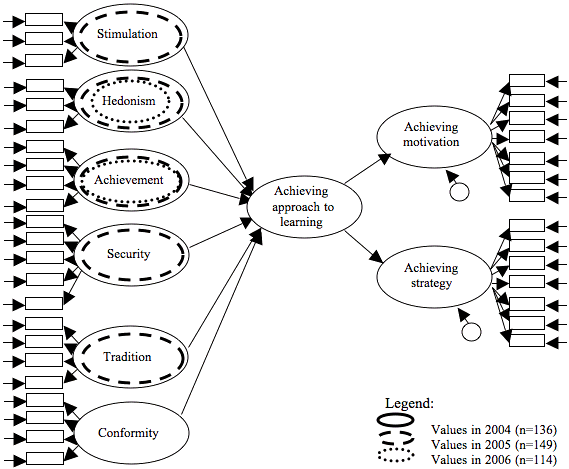
Figure 1: Personal values and achieving approach to learning: Changes over time
Only two values, namely hedonism and achievement, were substantively related to the achieving approach in 2006 (Table 3). A very strong positive effect which emerged from the achievement value in all years indicated that students who identified strongly with the achievement value also displayed high levels of strategies and motivation that characterize achieving approach to learning. Hedonism, on the other hand, exerted a negative effect on the achieving learning approach, which meant that those students who valued having fun and a good time were less likely to follow this approach to learning. Pairwise comparisons showed a significant gradual increase in the importance of tradition for students who scored higher on achieving learning approach between 2004 and 2005 (critical ratio=3.542). No difference in structural weights was observed for other values as the differences never went beyond 1.96.
| Personal values | Standardised regression weight | Critical ratio (>2 for statistical significance) | P value for statistical significance | ||||||
| 2004 | 2005 | 2006 | 2004 | 2005 | 2006 | 2004 | 2005 | 2006 | |
| Stimulation | .219 | .277 | -- | 2.180 | 2.644 | -- | .029 | .008 | -- |
| Hedonism | -.346* | -.314* | -.259 | -2.870 | -3.476 | -2.871 | .004 | .000 | .004 |
| Achievement | .773 | .807* | .943 | 3.887 | 7.025 | 7.438 | .000 | .000 | .000 |
| Security | .218 | .266 | -- | 2.087 | 2.597 | -- | .037 | .009 | -- |
| Tradition | -.237 | .267 | -- | -2.266 | 2.752 | -- | .023 | .006 | -- |
| Conformity | .324* | -- | -- | 2.756 | -- | -- | .006 | -- | -- |
| * The strongest predictors. | |||||||||
The relationships between personal values and the deep learning approach also differed between the three occasions. In 2004, self-direction, hedonism, and conformity represented values related to this learning approach (Figure 2). The positive effect of self-direction (Table 4) suggested that choosing one's activity and setting up an own plan were important for the students using the deep approach to learning when they started their undergraduate studies. Negative values for hedonism, on the other hand, suggest that students who scored higher on the deep learning approach deemed having fun less important. It should be noted that the negative sign of the effect between conformity and the deep learning approach meant that those students who valued conformity less, reported greater intrinsic motivation for their studies, higher inclination to read widely and to relate new knowledge to previous knowledge. Self-direction and hedonism were the only two values which were associated with the deep learning approach in 2005, which indicates that students who identified more with these values displayed more of the strategies and motivation of the deep learning approach. As was the case for the achieving approach, hedonism had a negative effect, suggesting that students who valued having fun, followed the deep learning approach to a lesser extent. Finally, in 2006, in addition to hedonism, which was significant in 2004, stimulation, tradition, and achievement emerged as additional predictors. Among all values, achievement and tradition had higher regression weights (Table 4).
In addition, a significant increase in the strengths of structural weights was observed for the self-direction value between 2004 and 2005 (critical ratio=2.206). Hedonism, on the other hand, became less influential in 2006 as compared to 2004 (critical ratio=3.068).
The relationships between personal values and the surface approach to learning also showed some similarities as well as differences across the three points in time (Figure 3 and Table 5). Self-direction and conformity influenced this learning approach in all years. The sign of the effects across all occasions meant that students who valued independent thought and exploration less and adherence to rules more than other students, reported greater instrumental motivation and inclination to limit studying to the essential requirements of instructors. At the beginning of their studies in 2004, security and achievement were also
| Personal values | Standardised regression weight | Critical ratio (>2 for statistical significance) | P value for statistical significance | ||||||
| 2004 | 2005 | 2006 | 2004 | 2005 | 2006 | 2004 | 2005 | 2006 | |
| Self-direction | .302 | .923* | -- | 2.706 | 2.576 | -- | .007 | .010 | -- |
| Stimulation | -- | -- | -.211 | -- | -- | -2.156 | -- | -- | .031 |
| Achievement | -- | - | .547* | -- | -- | 4.123 | -- | -- | .000 |
| Hedonism | -.474* | -.279 | -.210 | -3.292 | -2.501 | -2.205 | .000 | .012 | .027 |
| Tradition | -- | -- | -.255* | -- | -- | -2.366 | -- | -- | .018 |
| Conformity | -.388* | -- | -- | -3.015 | -- | -- | .003 | -- | -- |
| * The strongest predictors. | |||||||||
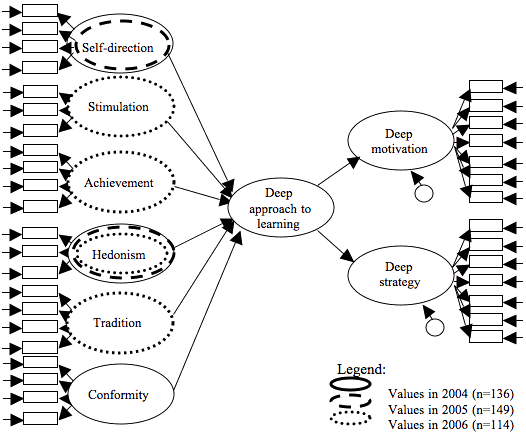
Figure 2: Personal values and deep approach to learning: Changes over time
linked to the surface approach conveying the importance of safety, harmony, stability in the society and self as well as the importance attached to achievement. In 2005, in addition to self-direction and conformity, hedonism was also positively linked to this learning approach, indicating that students who sought excitement and fun adhered more to this approach and were more inclined to work towards the minimum requirements displaying instrumental motivation. Conformity, however, had the strongest weight in comparison to other values in this year. In 2006, tradition and universalism emerged as other values of importance for this approach, whereby students who valued the observation of customs to a greater extent and believed that people should be treated equally, displayed more of the characteristics reflecting surface strategies and motivation. In the last year of their undergraduate studies, conformity and hedonism were the strongest predictors for the surface approach to learning. In addition to the results described above, the pairwise comparisons showed an increase in structural weights for conformity between 2004 and 2005 (critical ratio=2.28) and decrease between 2005 and 2006 (critical ratio=-2.504) demonstrating shifts in the importance attached to this personal value. Similar decrease was observed for self-direction between 2005 and 2006 (critical ratio=2.058).
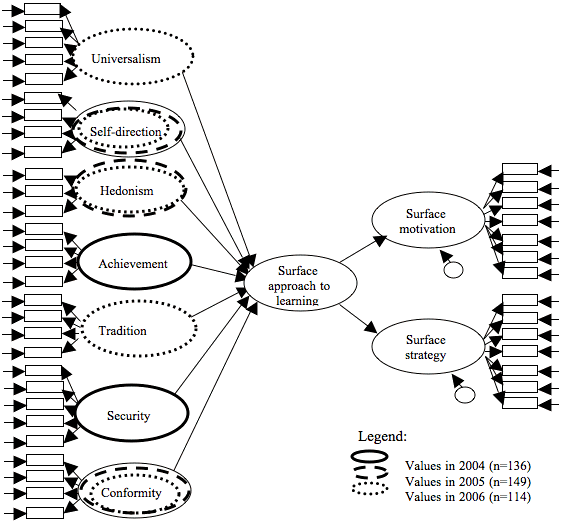
Figure 3: Personal values and surface approach to learning: Changes over time
| Personal values | Standardised regression weight | Critical ratio (>2 for statistical significance) | P value for statistical significance | ||||||
| 2004 | 2005 | 2006 | 2004 | 2005 | 2006 | 2004 | 2005 | 2006 | |
| Universalism | -- | -- | -.364 | -- | -- | -2.485 | -- | -- | .013 |
| Self-direction | -.559* | -.398* | -.309 | -3.515 | -2.743 | -2.373 | .000 | .006 | .018 |
| Hedonism | -- | .238 | .437* | -- | 2.804 | 2.930 | -- | .005 | .003 |
| Achievement | .247 | -- | -- | 2.121 | -- | -- | .034 | -- | -- |
| Tradition | -- | -- | .257 | -- | -- | 2.035 | -- | -- | .042 |
| Security | .624* | -- | -- | 3.207 | -- | -- | .001 | -- | -- |
| Conformity | .392 | .852* | .699* | 2.771 | 4.510 | 3.356 | .006 | .000 | .000 |
| * The strongest predictors. | |||||||||
Figure 4, 5, and 6 illustrate the results of the analyses that investigated the effect of the three learning approaches on achievement in the final year of students' undergraduate studies. The results showed that the more students displayed strategies and motives that characterised the achieving and the deep learning approaches, the better their GPA was (negative sign indicates the reverse grading system at the university where the data were collected). The surface approach, in contrast, resulted in a higher GPA, indicating lower performance of students who identified more with this approach to learning (positive sign) (Figure 6). The fit of the data to models was not perfect, but still acceptable given the non-normality of the data (Table 6). Fourteen per cent of the variance in students' academic performance was explained in the model with achieving approach to learning, 17% for the deep learning approach, and 8% in case of the surface learning approach.
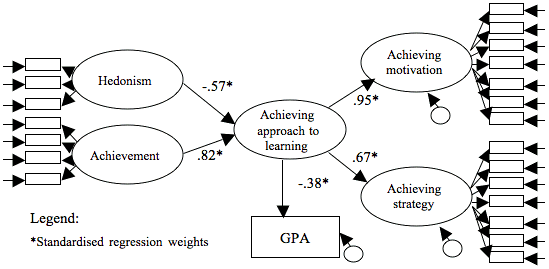
Figure 4: Achieving learning approach and GPA, 2006 (n=114)
| Models | chi2 | DF | chi2/DF | p | CFI | NFI | TLI | RMSEA |
| Achieving approach to learning | 316.7 | 191 | 1.65 | .000 | .856 | .719 | .809 | .076 |
| Deep approach to learning | 704.8 | 373 | 1.89 | .000 | .677 | .518 | .624 | .089 |
| Surface approach to learning | 798.2 | 421 | 1.89 | .000 | .617 | .461 | .549 | .089 |
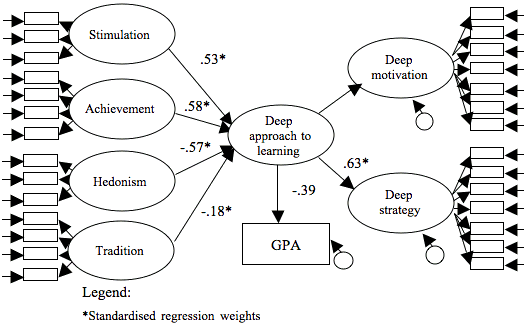
Figure 5: Effects of the deep approach to learning on academic performance, 2006 (n=114)
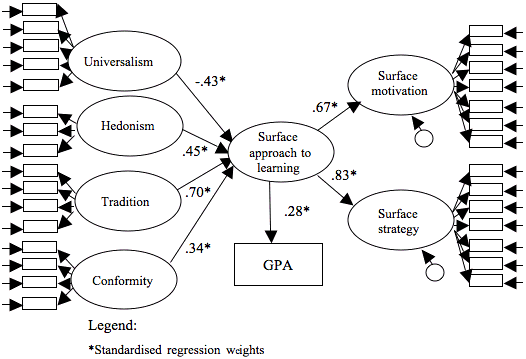
Figure 6: Effects of the surface approach to learning on academic performance, 2006 (n=114)
The analyses involving the variables illustrated in Figure 4, 5, and 6 were repeated for the data from 2004 and 2005. Results showed consistent effect of the deep learning approach in 2004 and 2005, which led to higher performance, whereas the surface approach resulted in lower performance. After the first semester of tertiary studies, in 2004, the effect of the achieving approach and the surface approach on achievement could be observed but were not significant (Table 8). Significant effects of the achieving and surface learning approaches were present only in 2005. Four per cent of the variance in GPA was explained in the model with achieving approach (2005). Fourteen per cent of the variable was explained for the deep learning approach in 2004 and 9% in 2005. Thirteen per cent was explained in case of the surface learning approach in 2005. The best fit of the models, however, was observed only for the deep approach to learning in 2005 and surface approach in 2005 (Table 7).
| Models | Year | chi2 | DF | chi2/DF | p | CFI | NFI | TLI | RMSEA |
| Achieving learning approach | 2004 | 1327.7 | 650 | 2.04 | .000 | .578 | .434 | .519 | .088 |
| 2005 | 916 | 515 | 1.77 | .000 | .725 | .554 | .682 | .073 | |
| Deep learning approach | 2004 | 726.5 | 401 | 1.81 | .000 | .639 | .468 | .581 | .068 |
| 2005 | 288.7 | 196 | 1.47 | .000 | .835 | .646 | .787 | .057 | |
| Surface learning approach | 2004 | 796.4 | 460 | 1.73 | .000 | .647 | .462 | .594 | .074 |
| Approach to learning --> GPA | Standardised regression weight | Critical ratio (>2 for statistical significance) | P value for statistical significance | |||
| 2004 | 2005 | 2004 | 2005 | 2004 | 2005 | |
| Achieving approach | -.125 | -.204* | -1.308 | -1.956 | .199 | .051 |
| Deep approach | -.417* | -.299* | -3.737 | -2.637 | .000 | .008 |
| Surface approach | .093 | .366* | 1.036 | 3.499 | .300 | .000 |
| * Significant at the 0.05 level | ||||||
"Gender" and "School" variables were introduced into the models at the next stage of the analysis with an intention to examine their effects on previously reported relationships. The specification of direct effects of these variables on each learning approach on the one hand and achievement on the other hand also allowed examining whether differences in approaches and GPA existed between male and female students or between students studying the "hard" natural sciences or the "soft" social sciences. Only two significant effects emerged from the introduction of these variables into the analyses using the 2006 data.
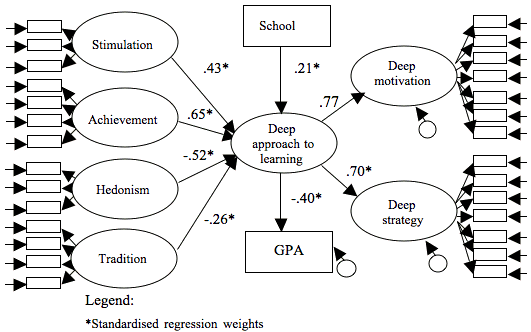
Figure 7: Effect of "School" for the deep learning approach, 2006 (n=114)
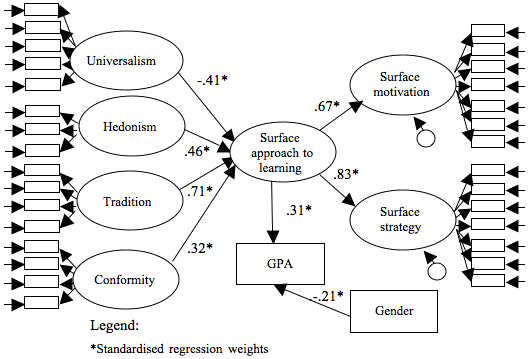
Figure 8: Effect of "Gender" on achievement for the surface learning approach, 2006 (n=114)
First, "School" had a significant positive effect on the deep learning approach (Figure 7) (p.=.000; chi2/DF=1.79; CFI=.706; NFI=.540; TLI=.648; RMSEA=.084; and % of explained variance in GPA=16%). The strength of structural weights for all variables decreased slightly once this variable was introduced, but was still significant. Given that students studying in the School of Engineering and Science were given a higher code, this meant that students in that school followed deep learning approach to a greater extent than their peers studying social sciences. No effect of "School" emerged on either the achieving approach or the surface approach in the final year of studies. Second, "Gender" emerged as having a significant negative effect on achievement in the model for the surface approach to learning in 2006 (Figure 8). Given that girls were coded "1" and boys were coded "0," this meant that female students achieved at a significantly higher level (= lower GPA) than male students when the surface approach to learning was at the centre of the analysis (p.=.000; chi2/DF=1.92; CFI=.594; NFI=.442; TLI=.525; and RMSEA=.091; and % of explained variance in GPA=17%).
The analysis described in question 4 was repeated with the data form 2004 and 2005. The results differed from those found in 2006. Neither gender nor school had a significant effect on any of the learning approaches in those years. No differences between males and females or between students from the two schools emerged regarding the achieving, deep, and surface approaches in the first and second year of study. Thus, the difference between natural and social science regarding the deep learning approach reported for 2006 was the only noteworthy effect as regards the relationship between discipline and gender on learning approaches. Gender difference with regards to the academic performance emerged only for the deep (2005) and the surface learning approaches (2004 and 2005), whereby girls outperformed boys while using any of these two approaches to learning (Table 9). The model fit was acceptable for the deep learning approach (p.=.000; chi2/DF=1.49; CFI=.799; NFI=.594; and RMSEA=.053) and the surface approach (2004: p.=.000; chi2/DF=1.70; CFI=.649; NFI=.459; and RMSEA=.072 and 2005: p.=.000; chi2/DF=1.72; CFI=.720; NFI=.538; and RMSEA=.064).
| Gender --> GPA | Standardised regression weights + % of explained variance | Critical ratio (>2 for statistical significance) | P value for statistical significance | |||
| 2004 | 2005 | 2004 | 2005 | 2004 | 2005 | |
| Deep approach | -- | -.204* (11%) | -- | -2.480 | -- | .013 |
| Surface approach | -.216* (5%) | -.210* (17%) | -2.573 | -2.621 | .010 | .009 |
| * Significant at the 0.05 level. | ||||||
In addressing question 1, it was found that different associations were observed in the structural relationships between values and learning approaches, which supports previous empirical research (Matthews, Lietz, & Darmawan, 2007). The multigroup comparison performed with the data available for the cohort over the three occasions also demonstrated that not only the structural associations between personal values and learning approaches changed over time, but also the strength of these associations.
While some differences emerged as to which specific values were related to which learning approach, consistency emerged as regards the number of these relationships. Thus, hedonism and achievement were among personal values that were consistently related to the achieving approach over three years. Whereas the achievement value, probably not surprisingly, had a large positive effect on the achieving approach, hedonism, that is the tendency to have fun, was negatively related to this approach across all occasions. Hedonism was also consistently and negatively linked to the deep approach throughout all years, whereas self-direction was a value that had a positive impact on this approach over a two-year period. Self-direction was a personal value that emerged as a constant predictor of the surface approach, albeit in the opposite direction to this effect for the deep approach. For the surface approach, students who attached less value to independent thought and exploration were more likely to report instrumental motivation and strategies that were reproductive in nature and valued rote learning. These results appear to confirm findings of earlier research about the relationship between personal values and approaches to learning (Matthews, 2004; Ng & Renshaw, 2002, 2003). In particular, they confirmed that while some adjustment takes place over time, the relationships between values and learning approaches that are stronger tend not to change.
The analyses performed for question 2 and 3, showed a consistent effect of the deep learning approach on students' GPA which resulted in higher performance across all three time points.
The achieving and surface learning approaches had significant effects on the performance during the second (2005) and the last year (2006) of studies. Similar to the deep approach, the achieving approach resulted in better academic performance. Adherence to the strategies that characterised surface motivation and strategies, in contrast, led to lower performance. This is in line with the findings reported previously (Hau & Salili, 1996; Watkins, 2003; Wilding & Andrews, 2006). These results contribute to what is known about the relationships between different learning approaches and academic performance as these effects emerged at nearly all points in time.
Third, the results reported in question 4 and 5 corroborate the knowledge concerning gender differences in learning (e.g., Cano, 2005; Picou, Gatlin-Watts, & Packer 1998; Rouse & Austin, 2002). Here, the current study identified several instances of gender differences which were found for the surface learning approaches across all years and for the deep learning approach in 2005. On all occasions, female students outperformed male students. The differences across the learning approaches, however, decreased in 2006 when significant gender differences emerged only with respect to the surface approaches. Finally, contrary to prior research, which has reported consistent differences in learning approaches between disciplines (Biggs, 1987b; Smith & Miller, 2005; Watkins & Hattie, 1981), only one instance of differences between the "hard" and the "soft" sciences was found in this study. In the final year of study, students in the natural science showed a significantly higher level of following the deep approach than their peers in the social sciences. The fact that these differences became significant at the end of the three-year period might stem from the fact that those effects needed time to intensify.
Biggs, J. B. (1987a). Student process questionnaire manual. Australian Council for Educational Research.
Biggs, J. B. (1987b). Student approaches to learning and studying. Melbourne: Australian Council for Educational Research.
Browne, M. W. & Cudeck, R. (1993). Alternative ways of assessing model fit. In K. A. Bollen & J. S. Long (Eds), Testing structural equation models (pp. 136_162). Newbury Park, CA: Sage.
Byrne, B. M. (2009). Testing for multigroup invariance using AMOS Graphics: A road less travelled. Structural Equation Modeling: A Multidisciplinary Journal, 1(2), 272-300.
Cano, F. (2005). Epistemological beliefs and approaches to learning: Their change through secondary school and their influence on academic performance. British Journal of Educational Psychology, 75, 203-221.
Chan, K. W. (2002). Students' epistemological beliefs and approaches to learning. Paper presented at the AARE Conference, Brisbane, Australia, 1-5 December, 2002.
Feather, N. T. (1975). Values in education and society. New York: The Free Press.
Fox, R. A., McManus, I. C. & Winder, B. C. (2001). The shortened Study Process Questionnaire: An investigation of its structure and longitudinal stability using confirmatory factor analysis. British Journal of Educational Psychology, 71, 511-530.
Gibbs, G. (1992). Improving the quality of student learning. Bristol: Technical and Educational Services.
Grant, H. & Dweck, C. S. (2001). Cross-cultural response to failure: Considering outcome attributions with different goals. In F. Salili, C. Y. Chiu and Y. Y. Hong (Eds.), Student motivation: The culture and context of learning (Plenum series on human exceptionality) (pp. 203- 219). New York: Plenum Publishers.
Gow, L. & Kember, D. (1990). Does higher education promote independent learning? Higher Education, 19, 307-322.
Hair, J, Black, W., Babin, B., Anderson, R. & Tatham, R. (2006). Multivariate data analysis. New Jersey: Pearson Prentice Hall.
Hau, K-T. & Salili, F. (1996). Achievement goals and causal attributions of Chinese children. In S. Lau (Ed.), Growing up the Chinese way: The role of culture in socialization (pp. 121-145). Hong Kong: The Chinese University Press.
Hu, L. & Bentler, P. M. (1999). Cutoff criteria for fit indexes in covariance structure analysis: Conventional criteria versus new alternatives. Structural Equation Modeling, 6(1), 1-55.
Jones, C., Reichard, C. & Mokhtari, K. (2003). Are students' learning styles discipline specific? Community College Journal of Research and Practice, 27, 363-375.
Keeves, J. P. (1975). The home, the school and achievement in mathematics and science. Science Education, 59(4), 439-460.
Kember, D. (2000). Misconceptions about the learning approaches, motivation and study practices of Asian students. Higher Education, 40(1), 99-121.
Kember, D., Biggs, J. & Leung, D. (2004). Examining the multidimensionality of approaches to learning through the development of a revised version of the Learning Process Questionnaire. British Journal of Educational Research, 74, 261-280.
Kline, R. (2005). Principles and practice of Structural Equation Modeling. New York: The Guilford Press.
Lai, P. & Biggs, J.B. (1994). Who benefits from mastery learning? Contemporary Educational Psychology, 19(1), 13-23.
Lietz, P. & Matthews, B. (2010). The effects of college students' personal values on changes in learning approaches. Research in Higher Education, 51(1), 65-87.
Lietz, P. & Matthews, B. (2006, December). Are values more important than learning approaches? Factors influencing student performance at an international university. Paper presented at the annual conference of the Australian Association for Research in Education, The University of Adelaide, Australia. http://www.aare.edu.au/06pap/lie06070.pdf
Marton, F. & Säljö, R. (1976a). On qualitative differences in learning_I, outcome and process. British Journal of Educational Psychology, 46, 4-11.
Marton, F. & Säljö, R. (1976b). On qualitative differences in learning_II, Outcome as a function of the learner's conception of the task. British Journal of Educational Psychology, 46, 115-127.
Matthews, B. (2004). Life values and approaches to learning: A study of university students from Confucian heritage cultures. Flinders University Institute of International Education. Research Collection, Number 12. Adelaide: Shannon Research Press.
Matthews, B., Lietz, P. & Darmawan, G. (2007). Values and learning approaches of students at an international university. Social Psychology of Education, 10, 247-275.
Ng, C. H. & Renshaw, P. D. (2002). Self-schema, motivation and learning: A crosscultural comparison. In D. M. McInernay and S. Van Etten (Eds.), Research on sociocultural influences on motivation and learning (Vol. 2) (pp. 55-87). Greenwich, CT: Information Age Publishing, Inc.
Ng, C. H. & Renshaw, P. D. (2003). Motivation and school learning. In J. P. Keeves (Ed.), Handbook of educational research in the Asia-Pacific region (pp.495-510). Dordrecht: Kluwer.
Oliver, J. M. & Mooradian, T. A. (2002). Personality traits and personal values: A conceptual and empirical integration. Personality and Individual Differences, 35(1), 109-125.
Ong, A. S. J. & Ward, C. (2005). The construction and validation of a social support measure for sojourners. The index of Sojourner Social Support (ISSS) Scale. Journal of Cross-Cultural Psychology, 36(6), 637-661.
Oppenheim, A. N. (1992). Questionnaire design, interviewing and attitude measurement. London: Pinter Publishers.
Picou, A., Gatlin-Watts, R. & Packer, J. (1998). A test for learning style differences for the U.S. border population. Texas Papers in Foreign Language Education, 3(2), 105-116.
Provost, S. C. & Bond, N. W. (1997). Approaches to studying and academic performance in a traditional psychology course. Higher Education Research and Development, 16(3), 309-320.
Ramsden, P. (1984). The context of learning. In F. Marton, D. Hounsell, & N. Entwistle (Eds.), The experience of learning (pp. 144-164). Edinburgh: Scottish Academic Press.
Rokeach, M. (1973). The nature of human values. New York: The Free Press.
Rouse, K. A. G. & Austin, J. T. (2002). The relationship of gender and academic performance to motivation: Within-ethnic-group variations. The Urban Review, 34(4), 293-316.
Salili, F. (1996). Achievement motivation: A cross-cultural comparison of British and Chinese students. Educational Psychology, 16(8), 271-281.
Schermelleh-Engel, K., Moosbrugger, H. & Mčller, H. (2003). Evaluating the fit of Structural Equation Models: Tests of significance and descriptive goodness-of-fit measures. Methods of Psychological Research Online, 8(2), 23-74.
Schwartz, S. H. (1994a). Are there universal aspects in the structure and contents of human values? Human values and social issues, current understanding and implications for the future. Journal of Social Issues, 50(5), 19-45.
Schwartz, S. H. (1994b). Beyond individualism and collectivism, new cultural dimensions of values. In U. Kim, H. C. Triandis, C. Kagitcibasi, S-C. Choi, & G. Yoon (Eds.), Individualism and collectivism, theory, method and applications (pp. 85-119). Thousand Oaks: Sage.
Schwartz, S. H. (2007). Draft users manual: Proper use of the Schwarz Value Survey, version 10 September 2007, compiled by Romie F. Littrell. Auckland, New Zealand: Centre for Cross Cultural Comparisons. [viewed 07/02/2011]. http://crossculturalcentre.homestead.com/Values.html
Schwartz, S., Melech, G., Lehmann, A., Burgess, S., Harris, M. & Owens, V. (2001). Extending the cross-cultural validity of the theory of basic human values with a different method of measurement. Journal of Cross-cultural Psychology, 32(5), 519-542.
Smith, S. & Miller, R. (2005). Learning Approaches: Examination type, discipline of study, and gender. Educational Psychology, 25(1), 43-53.
Trigwell, K. & Prosser, M. (1991). Improving the quality of student learning: The influence of the learning context and student approaches to learning on learning outcomes. Higher Education, 22, 251-266.
Ullman, J. B. (2001). Structural equation modelling. In B. G. Tabachnick & L. S. Fidell (Eds.), Using multivariate statistics (pp. 653-771). Needham Heights, MA: Allyn & Bacon.
Watkins, D. A. (2003) Student learning: A cross-cultural perspective. In J. P. Keeves (Ed.), Handbook of educational research in the Asia-Pacific region (pp. 441-462). Dordrecht, Netherlands: Kluwer.
Watkins, D. A. & Hattie, J. (1981). The learning process of Australian university students: Investigations of contextual and personological factors. British Journal of Educational Psychology, 51, 384-393.
Watkins, D. A. & Hattie, J. (1985). A longitudinal study of the approaches to learning of Australian tertiary students. Human Learning, 4, 127-141.
Wilding, J. & Andrews, B. (2006). Life goals, approaches to study and performance in an undergraduate cohort. British Journal of Educational Psychology, 76, 171-182.
Zeegers, P. (2001). Approaches to learning in science: A longitudinal study. British Journal of Educational Psychology, 71, 115-132.
| Authors: Liudmila Tarabashkina is currently completing postgraduate studies in marketing in the University of Adelaide. She has collaborated in research on education and learning approaches and currently is doing research about social marketing, childhood obesity, and child psychology. Email: liudmila.tarabashkina@adelaide.edu.au Dr Petra Lietz is a Principal Research Fellow at the Australian Council for Education Research. Her interests include methodological issues in international comparative research and factors influencing students' academic achievement. Email: lietz@acer.edu.au Please cite as: Tarabashkina, L. & Lietz, P. (2011). The impact of values and learning approaches on student achievement: Gender and academic discipline influences. Issues In Educational Research, 21(2), 210-231. http://www.iier.org.au/iier21/tarabashkina.html |